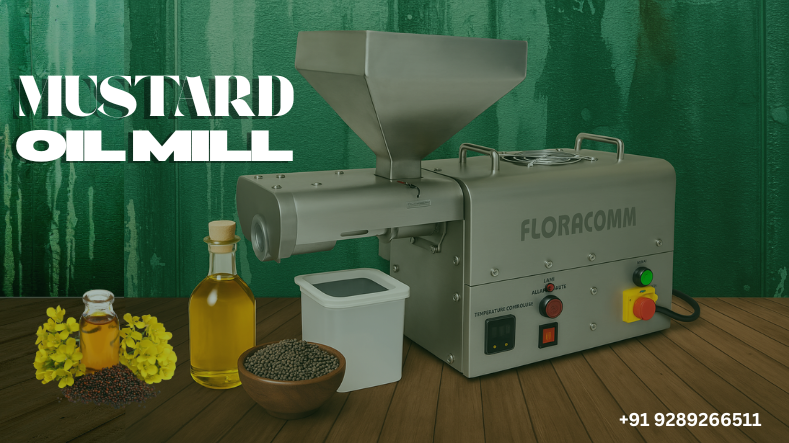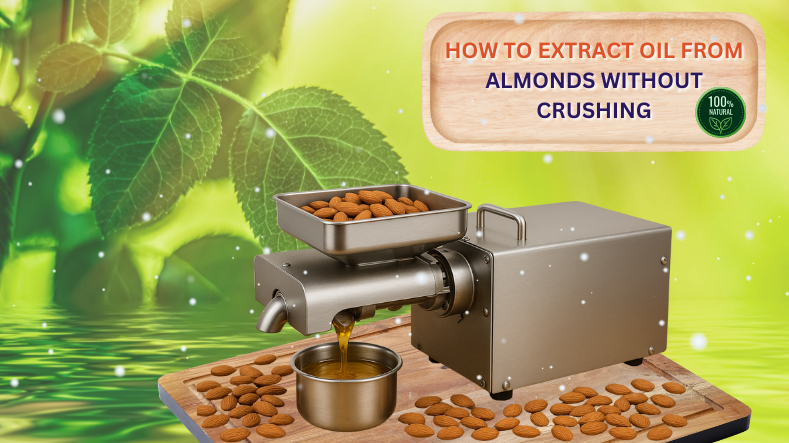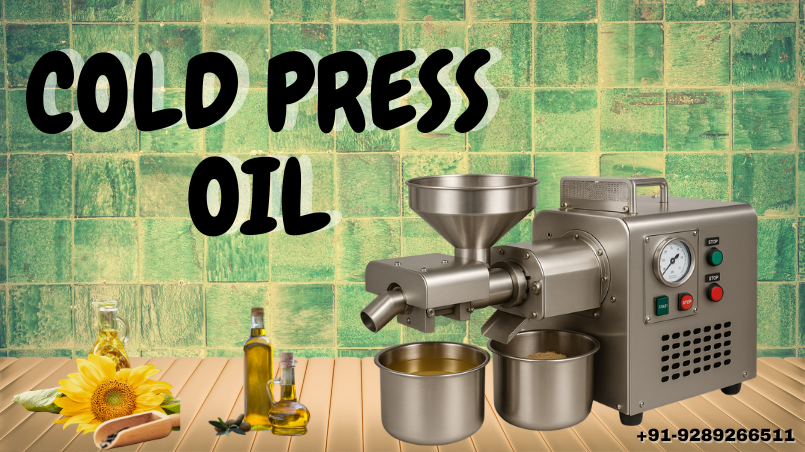Mustard Oil Plant Cost & Best Machinery Manufacturers: Everything You Need to Know
Cold-pressed mustard oil is in high demand, and entrepreneurs are cashing in. A mustard oil mill can be set up with an investment ranging from a few lakhs to several crores, depending on the scale. The real game-changers are reliable machinery, energy efficiency, and consistent access to raw seeds...
Mustard oil holds a special place in many kitchens, especially in India. Rich in flavor, aroma, and nutrition, it has been a staple in cooking, medicinal, and even beauty routines. If you’re planning to set up a mustard oil mill — whether small scale or commercial — there are several factors you need to consider. From the cost of establishing a plant, to choosing the right machinery, to selecting trusted manufacturers. Here’s everything you need to know.
What Goes Into the Cost of a Mustard Oil Plant
Starting a mustard oil mill involves both fixed and recurring costs. Understanding these helps you plan properly and avoid surprises.
|
Cost Item |
What It Includes / Factors to Consider |
|
Land / Location |
Choosing a site close to mustard seed supply will save transport costs. Also needs good access to water, electricity, and possibly waste disposal. |
|
Building / Shed |
A shed to house milling machinery, storage for raw materials, working space. The cost depends on size, materials, whether you need special flooring or ventilation. |
|
Machinery |
This is often the biggest upfront cost. Includes seed cleaning, crushing / pressing / extraction equipment, filtering, packaging, possibly heating or refining if you intend to produce different kinds of mustard oil. |
|
Utilities & Power |
Electricity (or fuel if you use steam or diesel-powered equipment), water supply, possible HVAC or cooling for preserving oil quality. |
|
Labour |
Skilled and unskilled labour for operation, maintenance, packaging. |
|
Permits, Certifications, Quality Testing |
Food safety standards, possibly organic / cold press certifications, lab tests, safety & environmental compliance. |
|
Working Capital |
Buying seeds, consumables (packaging, filters), maintenance, paying salaries until the business generates steady cash flow. |
Depending on scale, location, and the technology used, a mustard oil plant in India could cost anywhere from a few lakhs (for small or village-level mill) to several crores for a large scale commercial unit. Machinery quality and capacity are major determinants of cost.
What Machinery Do You Need: Key Components
When someone talks about a mustard oil mill, they usually mean a system that takes mustard seeds and turns them into oil — either by cold-pressing, hot pressing, or some combination. Here are components and features to consider:
- Seed Cleaning & Preparation: Removing stones, dust, and foreign material. Drying if required.
- Crushing / Pressing / Extraction:
- Cold Press (often called “cold pressed mustard oil*) — low temperature, minimal processing. Retains flavor, nutritional compounds; slower yield.
- Hot Press / Expeller Type — higher yield, faster processing; sometimes needs refining.
- Filtering / Purification: Removing sediment, ensuring clarity, removing off smells or oils that may reduce shelf life.
- Heating / Refined Processing (if you want “refined” oil).
- Packaging / Storage: Food-grade containers, dark bottles if preserving flavor, proper storage to prevent rancidity.
Also, look for machines made with food-grade stainless steel, easy to clean, good output per hour, energy efficiency, low maintenance.
Best Machinery Manufacturers: What to Look For
Choosing the right machinery manufacturer is critical. Here are criteria:
- Reputation & Track Record
- Years in business, especially in oil extraction machinery.
- References / customers whose mills are running well.
- Technology & Quality
- Are machines built with food grade steel? (304/316 SS is good.)
- Cold press vs. hot press options.
- Power consumption vs output capacity.
- After-Sales Support
- Spare parts availability.
- Maintenance service.
- Training for your staff.
- Customization & Capacity
- Ability to customize capacity (e.g. from 10-500 kg per hour etc.) to your projected scale.
- Flexibility: if you later want to extract oil from other seeds.
- Price vs Value
- Cheapest machine is not always the best. Consider long-term operational costs, energy usage, and yield.
- Warranties, durability.
Example: Floracomm / FLORA Oil Machine — Commercial Oil Extractor Machine FC-1500
To make this more concrete, let’s consider one machine as an example:
Model: Commercial Oil Extractor Machine FC-1500 from Flora Oil Machine.
Type: Cold and hot squeezing (i.e. can produce cold pressed mustard oil as well as higher temperature extractions).
- Material: Built of stainless steel (Grade 304 & 316) — good for food safety and durability.
- Capacity / Output: Raw material input approx. 10-12 kg/hour.
- Useful Features: Heavy load intake, easy cleaning, high output capacity, hassle-free operation.
- Versatility: Can extract oil from many types of seeds beyond mustard (groundnut, sesame, sunflower etc.). Good if you plan to diversify.
This model is ideal for small commercial operations, or medium scale if you stack multiple machines. The stainless steel build helps reduce maintenance, and cold press capability helps you tap into the premium oil market.
How Much Does a Machine Like FC-1500 Cost?
While I don’t have the exact current retail price, machines with similar specs often cost depending on:
- Capacity and power rating.
- Whether they are certified for food processing.
- Whether they include features like advanced filtration, automation.
From speaking with several manufacturers, expect something in the lakhs of rupees range. For example, smaller cold press machines (5-15 kg/hr) might cost significantly less than units of 100-500 kg/hr.
If you contact Flora with a quote request for FC-1500, ask about:
- Price including delivery to your location.
- Warranty & spare parts.
- Installation cost.
- Operating costs (electricity, maintenance).
Cold Pressed Mustard Oil vs Hot Pressed Mustard Oil
Customers increasingly demand cold-pressed mustard oil for its reputed health benefits. Key differences:
|
Feature |
Cold Pressed |
Hot Pressed / Conventional |
|
Temperature during extraction |
Low (often < 50 °C) |
Higher temperatures |
|
Nutrient retention |
Higher (vitamins, antioxidants, natural flavor) |
Some loss of nutrients |
|
Flavor & Aroma |
Stronger, more pungent, authentic |
Can be milder / modified |
|
Yield / Output |
Lower / slower |
Higher, faster |
|
Cost & Price |
Higher to manufacture, higher selling price |
Lower margins, more competition |
If you're aiming at premium or niche markets (organic, health-conscious consumers), cold pressed mustard oil gives you better value. If you’re targeting bulk / mass market, hot pressing may give more economic throughput.
Tips to Reduce Setup Cost Without Sacrificing Quality
- Begin with a scalable model — maybe a machine like FC-1500 — so you can grow by adding capacity.
- Make sure sourcing of mustard seeds is reliable and cost-efficient. Bulk purchase may reduce input cost.
- Use machines with good energy efficiency. Power consumption is a recurring cost.
- Ensure good maintenance practices; stainless steel machines that are cleaned properly can last longer with fewer breakdowns.
- If possible, partner with local agencies / government schemes for subsidies or grants for agro-processing units.
Final Thoughts
Setting up a mustard oil mill is a rewarding investment, not just financially — but also in terms of offering a natural, healthier oil to consumers. The key is to balance initial investment, machine quality & capacity, and market positioning (premium cold-pressed vs bulk).
If you choose good manufacturers (like Flora, in this example), invest in a reliable machine (with features like stainless steel, food safety, good warranty), and do your homework on seed supply and operations cost, your mustard oil business can thrive.


